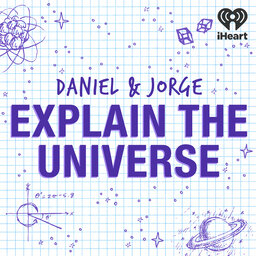Daniel answers Listener Questions about diamond rain on Jupiter, travel near the speed of light and the tilt of Uranus.
Daniel answers questions from listeners like you! Got questions? Come to Daniel's public office hours: https://sites.uci.edu/daniel/public-office-hours/
Learn more about your ad-choices at https://www.iheartpodcastnetwork.com
See omnystudio.com/listener for privacy information.
 Daniel and Jorge Explain the Universe
Daniel and Jorge Explain the Universe


